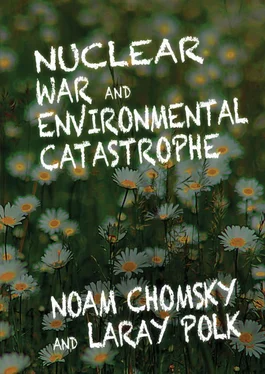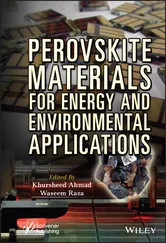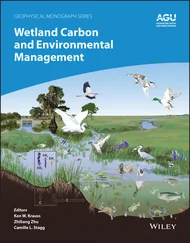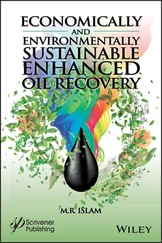Noam Chomsky and Laray Polk
NUCLEAR WAR AND ENVIRONMENTAL CATASTROPHE
If humans choose to work to minimize the existential threats of our time, perhaps the most improbable aspect of remedy is that we will accept modalities based on collaboration and creative adaptation, rather than perpetual combat and domination. [1] “To the world’s military leaders, the debate over climate change is long over. They are preparing for a new kind of Cold War in the Arctic, anticipating that rising temperatures there will open up a treasure trove of resources, long-dreamed-of sea lanes and a slew of potential conflicts.” Eric Talmadge, “As Ice Cap Melts, Militaries Vie for Arctic Edge,” Associated Press, April 16, 2012. Areas of future hostilities over oil include the Strait of Hormuz, South China Sea, and Caspian Sea basin. Michael T. Klare, “Danger Waters: The Three Top Hot Spots of Potential Conflict in the Geo-Energy Era,” TomDispatch.com, January 10, 2012. On drilling in the Chukchi and Beaufort seas, see note 3, chap. 1.
It is a stark fact that present and future economies are predicated on a finite energy resource: carbon-based fuels. [2] In 2005, while deep-water drilling in Angola, an Exxon spokesperson said, “All the easy oil and gas in the world has pretty much been found. Now comes the harder work in finding and producing oil from more challenging environments and work areas.” This is proved to be true as the new frontiers of unconventional oil (Arctic offshore, oil sands, oil shale, pre-salt deepwater, tight oil) involve extreme environmental risk in sensitive areas such as the boreal forest and the world’s oceans. Based on BP’s data, the estimated time span of the “world proved [oil] reserves” in meeting current demand is forty-six years. John Donnelly, “Price Rise and New Deep-Water Technology Opened Up Offshore Drilling,” Boston Globe , December 11, 2005; Mark Finley, “The Oil Market to 2030—Implications for Investment and Policy,” Economics of Energy & Environmental Policy 1, no. 1 (2012): 28, doi:10.5547/2160-5890.1.1.4.
Consensual science on climate change presents another fact: we may only have a few years to make adjustments in the collective carbon load before we are faced with irreversible consequences. As Christian Parenti in Tropic of Chaos perceptively and correctly points out:
“[E]ven if all greenhouse gas emissions stopped immediately—that is, if the world economy collapsed today, and not a single light bulb was switched on nor a single gasoline-powered motor started ever again—there is already enough carbon dioxide in the atmosphere to cause significant warming and disruptive climate change, and with that considerably more poverty, violence, social dislocation, forced migration, and political upheaval. Thus we must find humane and just means of adaptation, or we face barbaric prospects.” [3] Christian Parenti, Tropic of Chaos: Climate Change and the New Geography of Violence (New York: Nation Books, 2011), 226.
Seen in this light, to live collaboratively and creatively is less a radical proposal than a pragmatic one, if we, future generations, and the biosphere are to survive nuclear war and environmental catastrophe.
Laray Polk Dallas, Texas September 2012
ACHRE: Advisory Committee on Human Radiation Experiments
AEC: Atomic Energy Commission
ALEC: American Legislative Exchange Council
API: American Petroleum Institute
ARPA-E: Advanced Research Projects Agency-Energy
BIOT: British Indian Ocean Territory
BLEEX: Berkeley Lower Extremity Exoskeleton
BP: British Petroleum
CDB: China Development Bank
CIA: Central Intelligence Agency
CND: Campaign for Nuclear Disarmament
COP: Conference of the Parties to the UNFCCC
CTBT: Comprehensive Test Ban Treaty
CW: chemical weapons
DARPA: Defense Advanced Research Projects Agency
DEFCON: defense readiness condition
DOD: Department of Defense
DOE: Department of Energy
DU: depleted uranium
EPA: Environmental Protection Agency
GE: General Electric
HEU: highly enriched uranium
IAEA: International Atomic Energy Agency
IBM: International Business Machines
ISN: Institute for Soldier Nanotechnologies
IT: Information Technology
LEU: low-enriched uranium
MAD: mutually assured destruction
MIT: Massachusetts Institute of Technology
NAM: Non-Aligned Movement
NATO: North Atlantic Treaty Organization
NAVSTAR
GPS: navigation system for timing and ranging, Global Positioning System
NEPA: National Environmental Policy Act
NIH: National Institutes of Health
NNI: National Nanotechnology Initiative
NPT: Non-Proliferation Treaty
NSC: National Security Council
NSF: National Science Foundation
NSG: Nuclear Suppliers Group
NWFZ: nuclear-weapon-free zone
OPEC: Organization of the Petroleum Exporting Countries
OSRD: Office of Scientific Research and Development
PNE: peaceful nuclear explosion
POW: prisoner of war
PTBT: Partial Test Ban Treaty
R&D: research and development
RADAR: radio detection and ranging
SDS: Students for a Democratic Society
START: Strategic Arms Reduction Treaty
TRIPS: Trade-Related Aspects of Intellectual Property Rights
UN: United Nations
UNFCCC: UN Framework on Convention on Climate Change
WgU: weapon-grade uranium
WTO: World Trade Organization
1.
Environmental Catastrophe
Laray Polk: When we began this conversation in 2010, our starting point was a statement you had recently made in the press: “There are two problems for our species’ survival—nuclear war and environmental catastrophe.” What is meant by “environmental catastrophe”?
Noam Chomsky: Actually, quite a lot of things. The major one is anthropogenic global warming—human contribution to global warming, greenhouse gases, others—but that’s only a part of it. There are other sources of what’s called pollution—the destruction of the environment—that are quite serious: erosion, the elimination of agricultural land, and turning agricultural land into biofuel, which has had a severe effect on hunger. It’s not just an environmental problem; it’s a human problem. Building dams and cutting down the Amazon forests has ecological consequences—there are thousands of things and the problems are getting a lot worse.
For one reason, because of the role of the United States. I mean, nobody’s got a wonderful role in this, but as long as the United States is dragging down the entire world, which is what it’s doing now, nothing significant is going to happen on these issues. The US has to at least be seriously taking part and should be well in the lead. It’s kind of ironic; if you look at this hemisphere, the country that is well in the lead in trying to do something serious about the environment is the poorest country in South America, Bolivia. They recently passed laws granting rights to nature. [4] Ley de Derechos de la Madre Tierra, Ley Nro. 071 (Estado Plurinacional de Bolivia December 21, 2010), http://www.gobernabilidad.org.bo/ . See also, agenda for “Rights of Mother Earth: Restoring Indigenous Life Ways of Responsibility and Respect,” International Indigenous Conference, Haskell Indian Nations University, Lawrence, Kansas, April 4–6, 2012.
It comes out of the indigenous traditions, largely—the indigenous majority, they’ve got the government advocating on their behalf. Sophisticated Westerners can laugh at that, but Bolivia is going to have the last laugh.
Anyway, they’re doing something. In the global system, they’re in the lead, along with indigenous communities in Ecuador. Then there’s the richest country—not only in the hemisphere, but in world history—the richest, most powerful country, which is not only doing nothing, but is going backward. Congress is now dismantling some of the legislation and institutions put into operation by our last liberal president, Richard Nixon, which is an indication of where we are. [5] Pres. Nixon advocated for an autonomous regulatory agency for antipollution programs upon entering office. In 1969 Congress passed the National Environmental Policy Act (NEPA); within a year, the Environmental Protection Agency had been established. At the signing of NEPA, Nixon remarked, “[T]he 1970s absolutely must be the years when America pays its debt to the past by reclaiming the purity of its air, its waters, and our living environment. It is literally now or never.” “The Guardian: Origins of the EPA,” EPA Historical Publication-1 (Spring 1992); Dennis C. Williams, “The Guardian: EPA’s Formative Years, 1970–1973,” EPA 202-K-93-002 (September 1993).
Читать дальше












